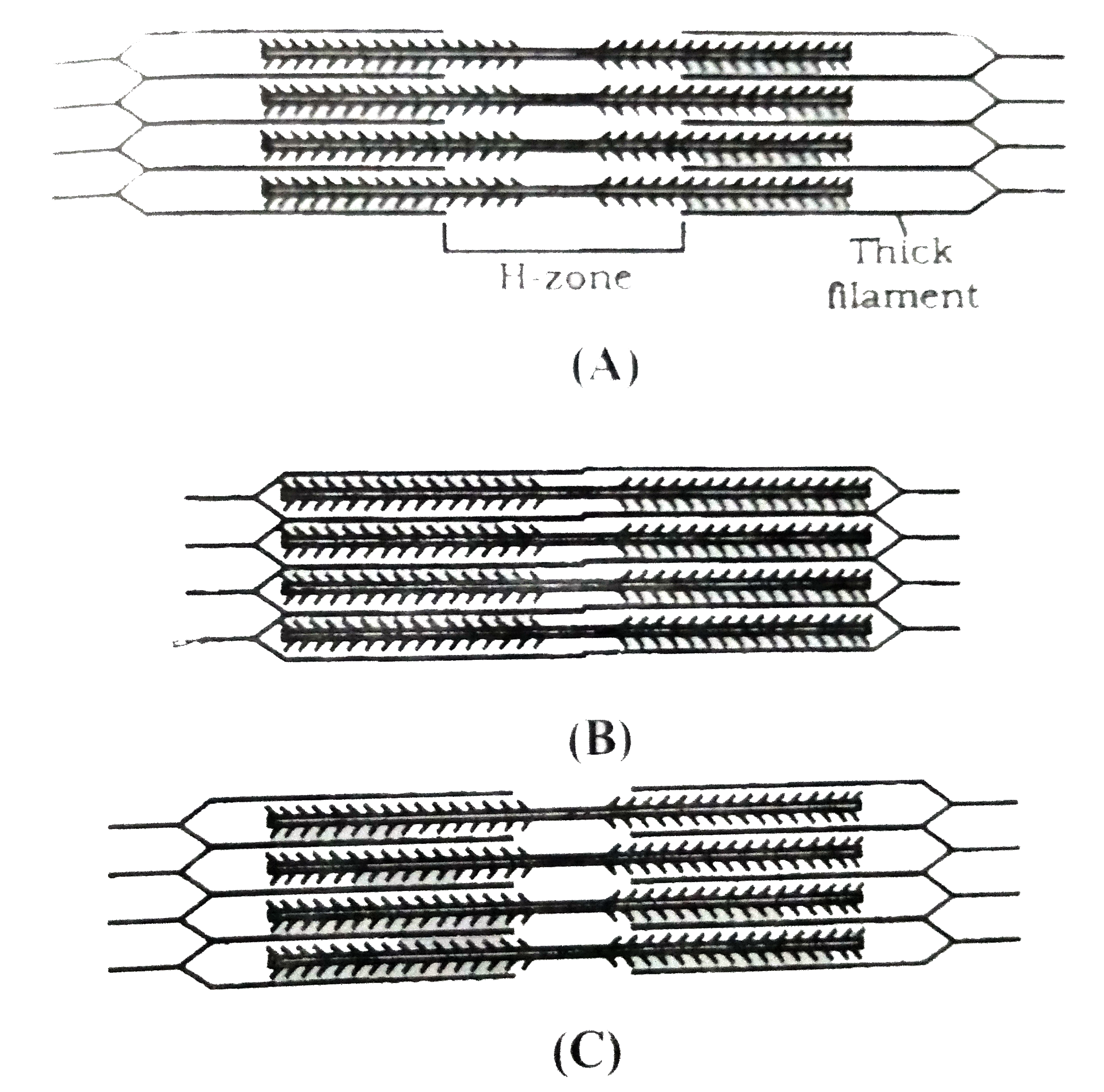Which points are correct with the regarding of skeletal muscles ?
(1) Their activities are under the voluntary control of the nervous system.
(2) They are located in the inner walls of visceral organs.
(3) They are primarily involved in locomotory actions and changes of body postures.
(4) They have no striped appearance
a) B,D
b) B,C,D
c) A,D
d) A,C
The correct Answer is:4
To determine which points are correct regarding skeletal muscles, let's analyze each statement one by one:
1. Statement 1: "Their activities are under the voluntary control of the nervous system."
- Analysis: This statement is true. Skeletal muscles are indeed under voluntary control, meaning we can consciously control their movements. They are primarily responsible for actions like walking, running, and other movements we perform intentionally.
2. Statement 2: "They are located in the inner walls of visceral organs."
- Analysis: This statement is false. Skeletal muscles are not found in the inner walls of visceral organs; instead, they are attached to the skeleton and are responsible for moving bones. The muscles located in the inner walls of visceral organs are smooth muscles, not skeletal muscles.
3. Statement 3: "They are primarily involved in locomotory actions and changes of body postures."
- Analysis: This statement is true. Skeletal muscles play a crucial role in locomotion (movement) and maintaining body posture. They are the muscles that allow us to move our limbs and maintain our stance.
4. Statement 4: "They have no striped appearance."
- Analysis: This statement is false. Skeletal muscles do have a striped or striated appearance due to the arrangement of actin and myosin filaments within the muscle fibers. This striated pattern is a defining characteristic of skeletal muscles.
Conclusion: The correct statements regarding skeletal muscles are:
- Statement 1: True
- Statement 2: False
- Statement 3: True
- Statement 4: False
Thus, the correct points about skeletal muscles are statements 1 and 3.
Summary of Correct Statements:
- Statement 1 and Statement 3 are correct regarding skeletal muscles.
- Analysis: This statement is true. Skeletal muscles are indeed under voluntary control, meaning we can consciously control their movements. They are primarily responsible for actions like walking, running, and other movements we perform intentionally.
- Analysis: This statement is false. Skeletal muscles are not found in the inner walls of visceral organs; instead, they are attached to the skeleton and are responsible for moving bones. The muscles located in the inner walls of visceral organs are smooth muscles, not skeletal muscles.
- Analysis: This statement is true. Skeletal muscles play a crucial role in locomotion (movement) and maintaining body posture. They are the muscles that allow us to move our limbs and maintain our stance.
- Analysis: This statement is false. Skeletal muscles do have a striped or striated appearance due to the arrangement of actin and myosin filaments within the muscle fibers. This striated pattern is a defining characteristic of skeletal muscles.
- Statement 1: True
- Statement 2: False
- Statement 3: True
- Statement 4: False
- Statement 1 and Statement 3 are correct regarding skeletal muscles.
Topper's Solved these Questions
- HUMAN PHYSIOLOGY -IBOOK - ALLENCHAPTER - HUMAN PHYSIOLOGY -IEXERCISE - EXERCISE-I(Previous Year Questions) (AIIMS 2010)
8 Videos
- HUMAN PHYSIOLOGY -IBOOK - ALLENCHAPTER - HUMAN PHYSIOLOGY -IEXERCISE - EXERCISE-III(Analytical Questions)
19 Videos
- HUMAN HEALTH AND DISEASEBOOK - ALLENCHAPTER - HUMAN HEALTH AND DISEASEEXERCISE - Question
116 Videos
- HUMAN REPRODUCTION BOOK - ALLENCHAPTER - HUMAN REPRODUCTION EXERCISE - Question
92 Videos
Similar Questions
Look at the given diagram of events during muscle contraction, named as A,B,C. Identidy the diagram that shows gradual shortening of length of Sarcomere :−

View SolutionMatch the columns and pick out the correct answer :−
Column-AColumn-B(i)Altas/axis(a)Saddle joint(ii)Carpal/metacarpal(b)Hinge joint(iii)Between phalanges(c)Fibrous joint(iv)Femur/acetabulum(d)Ball and socket joint(v)Between cranial bones(e)Pivot joint
View SolutionWhy is that once a person starts taking alcohol or drugs, it is difficult to get rid of this habit? Discuss it with your teacher.
View SolutionWhich of the following is not a part of female reproductive system ?
Ovary, oviduct uterus, vasdeferens, hymen
View SolutionWhich of the following muscles are primarily involved in locomotory actions and changes of body postures?
View SolutionThe activities of the visceral muscles are not under the voluntary control of the nervous system and are therefore known as
View SolutionAssertion: Skeletal muscles me also known a voluntary muscles. Reason: The activity of the skeletal muscles ue under the voluntary control of the nervous syxtem.
View SolutionAssertion :− Skeletal muscles are closely associated with the skeletal components of the body.
Reason :− Skeletal muscles are primarily involved in locomotory actions and changes of body postures.
View SolutionAssertion : - Visceeral muscles do not exhibit any striation and are smoth in appearance. Reason :- Their activities are not under the voluntary control of nervous system.
View SolutionWhich of the following muscles are not under the voluntary control of nervous system ?
View SolutionHow many of the following features belong to skeletal muscles?
I. Striped appearance
II. Voluntary nature
III. Not under the control of CNS
IV. Primarily involved in locomotory actions.
View Solutionकथन : बरनौली प्रमेय आदर लागू होती है। कारण :- धारा रेखीय प्रवाह में श्यान बल कार्यरत नहीं होता है।
View Solutionकथन :- शीतोष्ण क्षेत्रों में वर्ष भर संवहनी एधा सक्रियता समान नहीं होती है। कारण :- संवहनी एधा की सक्रियता कई कार्यिकी व वातावरणीय कारकों से नियंत्रित होती है।
View SolutionWhich muscles are primarily involved in locomotory actions and changes of body postures:
View SolutionWhich of the following muscles are not under the voluntary control of nervous system ?
View SolutionHow many of the following features belong to skeletal muscles?
I. Striped appearance
II. Voluntary nature
III. Not under the control of CNS
IV. Primarily involved in locomotory actions.
(a) one
(b) two
(c) three
(d) four
View Solution

